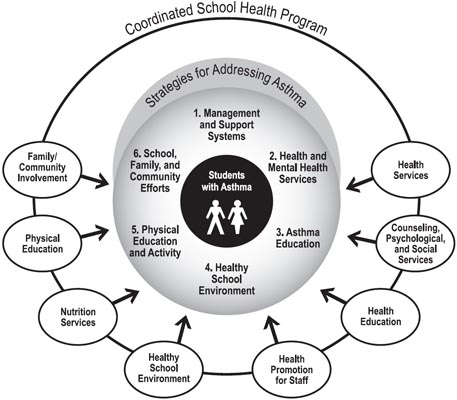
Call it “Team Asthma.” After all, this disease is one of the top reasons that American children miss many a day of school. According to the Asthma and Allergy Foundation of America over 14-million kids missed a slew of school days every year.
And an asthma attack while they’re at school is pretty scary for kids. That’s why you need to keep the channels of communication open between you and the place of learning.
Work with teachers and other folks that are employed at the school to enlist everyone in “Team Asthma.”
Plan for Action
At the ENT Center of Austin, we can give you an asthma action plan. Included will be step-by-step a facts list for a child’s home-away-from-home to prevent and how to handle an attack. This is critical. We’ll suggest things like:
- You share all contact information.
- How the teachers and others can recognize an asthma attack.
- What adults need to do to manage your child’s medications.
- Supply the school with quick-relief medications.
- How the school-yard adults who watch over recess times, can manage an attack.
- What to do to prevent an attack.
- Keep a record of any and all asthma triggers with the thought of trying to reduce your child’s exposure.
- How to snap into action based on peak allergy forecasts, alerts and symptoms.
- When and how to seek emergency care.
Who do you share this information with?
- Teachers, including music, art and physical education people.
- Administrators, such as the school principal.
- School nurses.
- Bus drivers.
- Cafeteria staff.
- Playground staff.
- After-school caregivers.
- Babysitters
- Extended Family
Ask the principal to set-up a convenient time to meet with “Team Asthma” members at the beginning of the year. Topics to discuss:
- Ask everyone to treat your child just as they would any other student.
- Encourage teachers and others to not draw attention to your child’s condition.
- Tell the gathering about the medications which should be on-hand.
- Explain how to dole-out the medications and any potential side effects.
- Give some instructions on how and when to use a peak flow meter.
- Talk about those triggers and any activities which spark a symptom. Like extra goings-on such as gym class, sports and field trips. Explain your child’s limitations.
- Go into how your child manages an asthma attack.
The School’s Environment and Triggers
This is your time to take a tour of the institution. What you should be scrutinizing are:
- Air quality and ventilation.
Hopefully the school is a tobacco-free zone. Not only that, white glove the classrooms for excessive dust. - Classroom pets.
Those fuzzy and furry animals can be a trigger. Same goes for the pet’s dander. Not just in a single classroom, but because of the air circulation systems, the stuff can spread to other parts of the building. - Cleanliness.
Which is next to godliness. While we live in a secular society, make sure the local gods who do janitorial work, do their best to use unscented materials. - Moisture.
Mold is a trigger to some children. That spore grows when there is too much moisture. Basically, the relative humidity in the school should be 50% or lower.
The ENT Center of Austin will give you a personalized plan for “Team Asthma.” Just ask and we’ll tell all.
Image Source: CDC.gov

